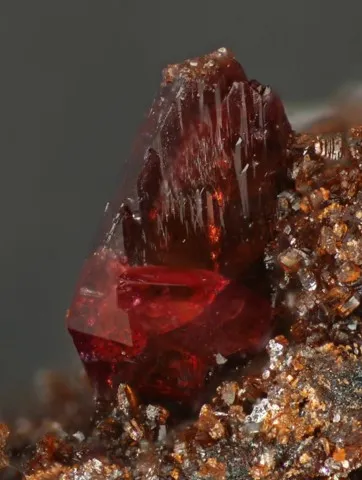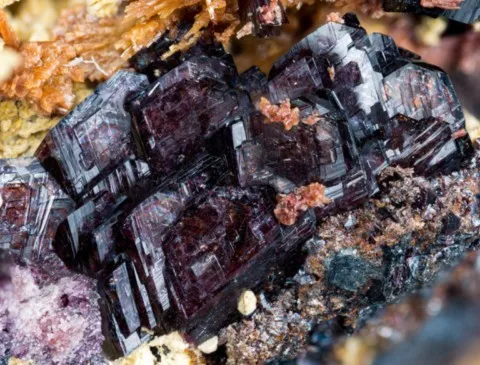TINSLEYITE
Class : Phosphates, arsenates, vanadates
Subclass : Hydrated phosphates
Crystal system : Monoclinic
Chemistry : KAl2(PO4)2(OH) 2H2O
Rarity : Very rare
Tinsleyite is a very rare phosphate of complex granitic pegmatites. It occurs with other secondary phosphates in few pegmatites worldwide. It was named in honor of Frank C. Tinsley for his work in preserving rare minerals found in pegmatites of South Dakota. Tinsleyite forms tabular prismatic crystals intergrown with leucophosphite. It is a brightly colored mineral (magenta to light brownish red or reddish-purple) and frequently zoned, making for attractive compositions with intergrowths of colorless leucophosphite.
Main photo : Tinsleyite from the Tip Top pegmatite, South Dakota, USA © Michael Scott
Tinsleyite in the World
Twinning
No twinning known for this mineral species.
Fakes and treatments
No fakes listed for this mineral species.
Hardness : 5
Density : 2.69
Fracture : Irregular
Streak : Pink
TP : Translucent to transparent
RI : 1.591 to 1.604
Birefringence : 0.013
Optical character : Biaxial +
Pleochroism : Strong
Fluorescence : None
Solubility : -
Magnetism : NoneRadioactivity : None


